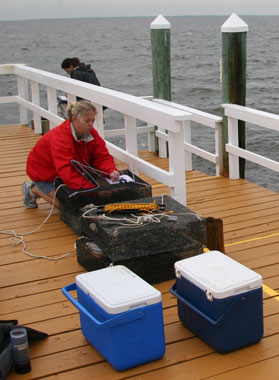
Taking advantage of a toxic red tide blooming off of the Florida coast, two NOAA-funded scientists are validating a natural method that neutralizes the algal toxin. Shellfish throughout the Gulf states are susceptible to contamination by red tide algae (Karenia brevis), and commercial operators lose money when their beds are closed for extended periods.
Applying the amino acid cysteine – common in foods and made by the human body – to clams in storage tanks blocks much of the toxin from binding to the shellfish’s tissues.
This approach worked in the lab; now they need to try it out in the wild, so they’re in Florida where NOAA and the state are currently monitoring a bloom. Treating harvested clams in storage tanks costs considerably less than treating them at their beds.
If this method proves worthwhile, shellfish companies may be able to harvest safely under conditions they once could not.
